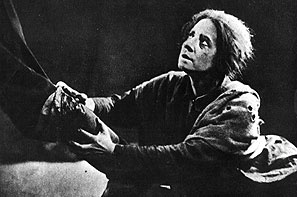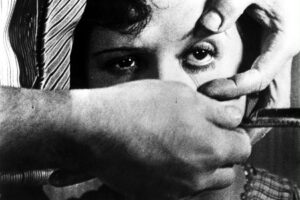History of Cinema – Soviet Film and French Cinema

The Mother, 1926
From its inception, Soviet film was steeped in socialist ideology and was intended to serve primarily a propaganda function. Nevertheless, it cannot be denied its contribution to the development of world film, especially in the field of editing. French cinema, on the other hand, discovered cinematic dynamics and the possibilities of image deformation.
Soviet silent film – history
One of the most important achievements of Soviet film, specifically Lev Kuleshov, was the initiation of composing the ambiguous frame. Dziga Vertov, on the other hand, used associative editing and was the first to create an autothematic film – “Man with a Movie Camera”, which told the very process of filmmaking. Vsevolod Pudovkin, on the other hand, succeeded in using montage that highlighted the hidden meaning of the events shown (the so-called constructive montage). This montage acted as a kind of commentary to the story being told.
Pudovkin’s most outstanding film, mentioned alongside Eisenstein’s famous masterpiece “Battleship Potemkin”, is “Mother” (1926). Here the director tells the story of a young revolutionary who is sent to prison for his communist sympathies. His mother helps him escape, so that she and young Pavel join the workers’ revolt. Pudovkin, unlike Eisenstein, focuses in his film not on the collective, but on individual characters. His greatness lies in his ability to show history through the prism of the history of ordinary people.
Soviet film – “Strike” by S. Eisenstein
However, the undisputed artist of Soviet cinema was Sergei Eisenstein. For he introduced “intellectual montage” into his works. The director himself understood it in such a way that from two different shots something third is supposed to arise – an intellectual conclusion, for example, the shot of an eye and water – means crying. Interestingly, the director mostly used juxtaposition of contrasting elements. An example of intellectual montage is, for example, the association in “Strike” of a scene of a massacre of workers with a scene of slaughtering an ox.
Interestingly, the inspiration for experimentation for the creators of Soviet cinema, and above all for Eisenstein, was the attempt to ideally combine the revolutionary content of the film with a revolutionary form. Undoubtedly, the cinema was intended to fulfill propaganda functions, but this was one of the few cases in the history of art when politics did not harm artistic achievements. On the contrary, in Soviet film we have a true revolution of cinematic language. A revolution that, in addition, was an achievement on a global scale.
French cinema – the cinematic avant-garde

The late 1920s brought an explosion of experimentation in French cinema. At that time, innovative artistic directions appeared – Surrealism and Impressionism. Among the Impressionists, names such as Louis Delluc, Epstein, Gance can be mentioned; on the other hand, cinematic Surrealism is primarily signed by Luis Buñuel. The basic premise of the avant-garde was to focus on the sense of sight – the film was to be first and foremost an image, that is, its task was not so much to narrate events as to convey thoughts and moods.
This is characterized by a subjective view of the world, all the deformations of the image, the changing pace of movement, the use of mirror reflections. The avant-garde introduced to cinema the so-called polyphonic montage, based on a large number of very short shots, often irrational. Flagship examples of works include Gance’s “The Wheel” (1922) and “An Andalusian Dog” (1929) by Salvadore Dali and L. Buñuel.
“An Andalusian Dog” consists of a sequence of loosely connected images strongly inspired by psychoanalysis. The film still arouses great emotion today due to the presence of drastic scenes. A shot in which the eye is cut with a razor has gone down in cinema history. It is worth mentioning that the work was inspired by the dreams of the filmmakers. One can see in it an exploration of human fears, obsessions and dark desires. Above all, however, it is an expression of cinematic surrealism.
Literature:
J. Płażewski, Język filmu, Wa-wa 1982
